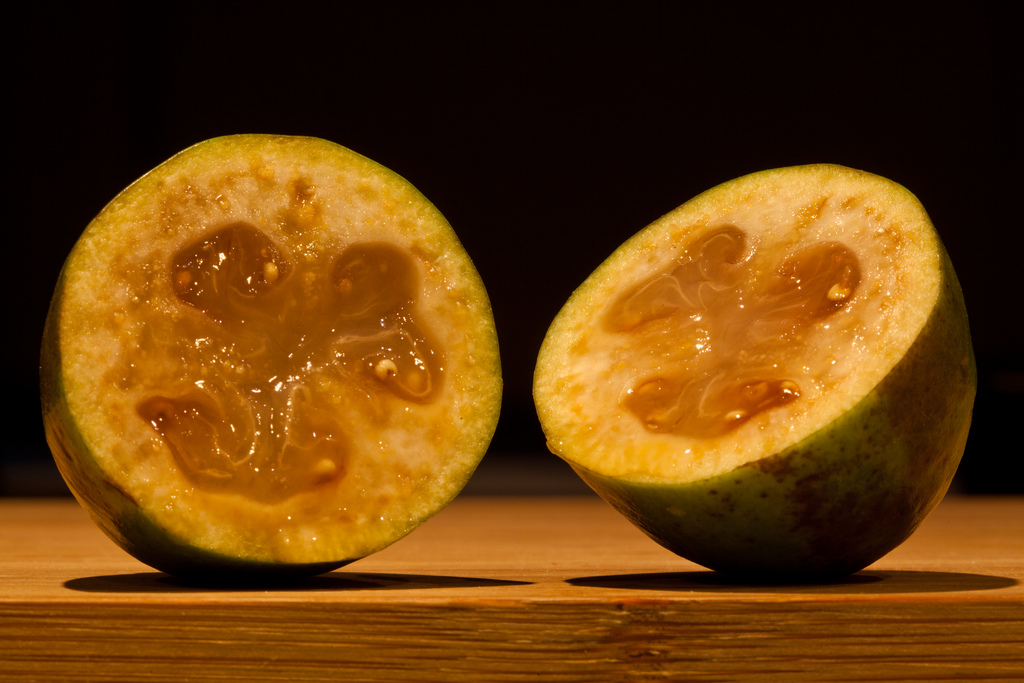Feijoa is a species of flowering plant in the myrtle family, Myrtaceae. It’s native to the highlands of southern Brazil, eastern Paraguay, Uruguay, northern Argentina and Colombia. Take a look below for 25 more fun and interesting facts about feijoa.
1. Feijoa sellowiana Berg is from the genus which the German botanist, Ernst Berger, named after Joao de Silva Feijo, a Portuguese naturalist, and the specific name honors Friedrich Sellow, a German who first collected specimens of feijoa in southern Brazil.
2. The fruit has been nicknamed “pineapple guava,” “Brazilian guava,” “fig guava,” or “guavasteen” among different countries.
3. It grows in slightly acidic, well-drained soil, in the partial shade.
4. Feijoa was collected from the wild during the 19th century and introduced to the rest of the world during the 20th century.
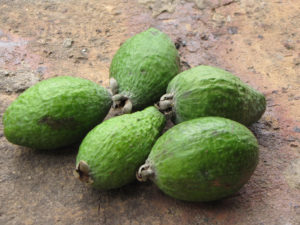
5. It’s cultivated as a source of food and in ornamental purposed.
6. New Zealand is the biggest producer of feijoa in the world.
7. Feijoa can grow in the form of a tree or shrub. It can reach 8 to 15 feet in height and 15 feet in width.
8. The stem of the feijoa tree is covered with pale grey bark. Young branches can be recognized by swollen nodes and tiny hairs.
9. Feijoa has thick, oval leaves that are dark green on the upper side, and silvery-grey below. Leaves have short petioles and they’re oppositely arranged on the branches.
10. Feijoa produce numerous flowers that can grow individually or in clusters. They have white petals tinged with purple on the inner side. The flowers contain both types of reproductive organs.
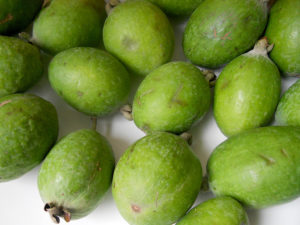
11. They bloom from May to June. Feijoa flowers attract birds and bees, which are responsible for the pollination of he plant.
12. Feijoa can be elliptic, oval, elongated or pear shaped with blue-green, bluish or grey skin on the surface. It has grayish-white flesh that surrounds gel-like pulp filled with 20 to 40 seeds, located in the middle of the fruit. The fruit ripens 5 to 6 months after pollination.
13. Feijoa start to produce fruit 3 to 5 years after planting. People usually shake the trees and collect the ripe fruit from the ground every couple of days during harvest time.
14. The plant propagates through seeds, cuttings, grafting and layering.
15. All parts of the feijoa are edible, but the skin is usually discarded. It has a sweet flavor that resembles the taste of guava, pineapple, strawberry and sweet grape.
16. It’s a rich source of dietary fibers, vitamins C, K, and vitamins of the B complex. It also provides a significant amount of minerals such as calcium, magnesium and copper.
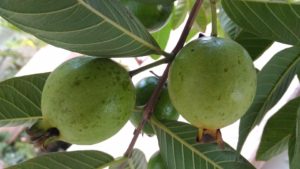
17. Feijoa can be eaten raw, or as an ingredient of muffins, cakes, jellies, jams and refreshing beverages.
18. Petals of feijoa flowers have a mildly sweet flavor and they’re occasionally used for the preparation of various salads.
19. The feijoa tree is an ornamental plant that can also be used as a windbreak and hedge.
20. Compounds isolated from feijoa have the potential to prevent cardiovascular disorders and the development of certain types of cancer.
21. Feijoa is a perennial plant that can survive more than 45 years in the wild.
22. In the Northern Hemisphere, feijoa has been cultivated as far north as western Scotland, but under such conditions it doesn’t fruit every year, as winter temperatures below -9 degrees Celsius kill the flower buds.
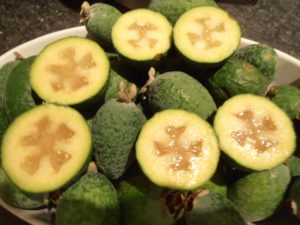
23. Feijoas are somewhat tolerant of drought and salt in soils, though fruit production can be adversely affected.
24. Feijoas are occasionally found as landscape plants in Texas, Florida and California. They can succeed in greenhouses in temperate parts of the United States, and have been grown in-ground as fruiting trees on the United States east coast in coastal Georgia and South Carolina, as well as in California.
25. In the South Caucasus, feijoas have been cultivated in the southern coastal region of Azerbaijan since 1928.

